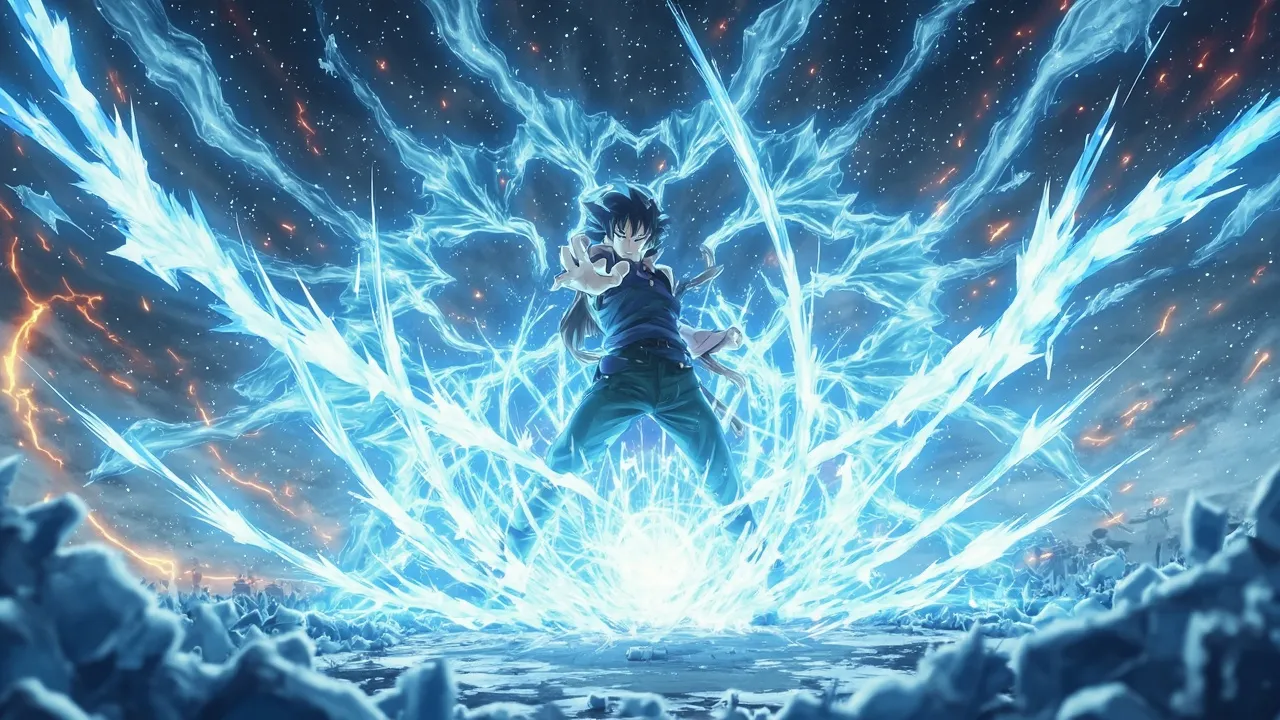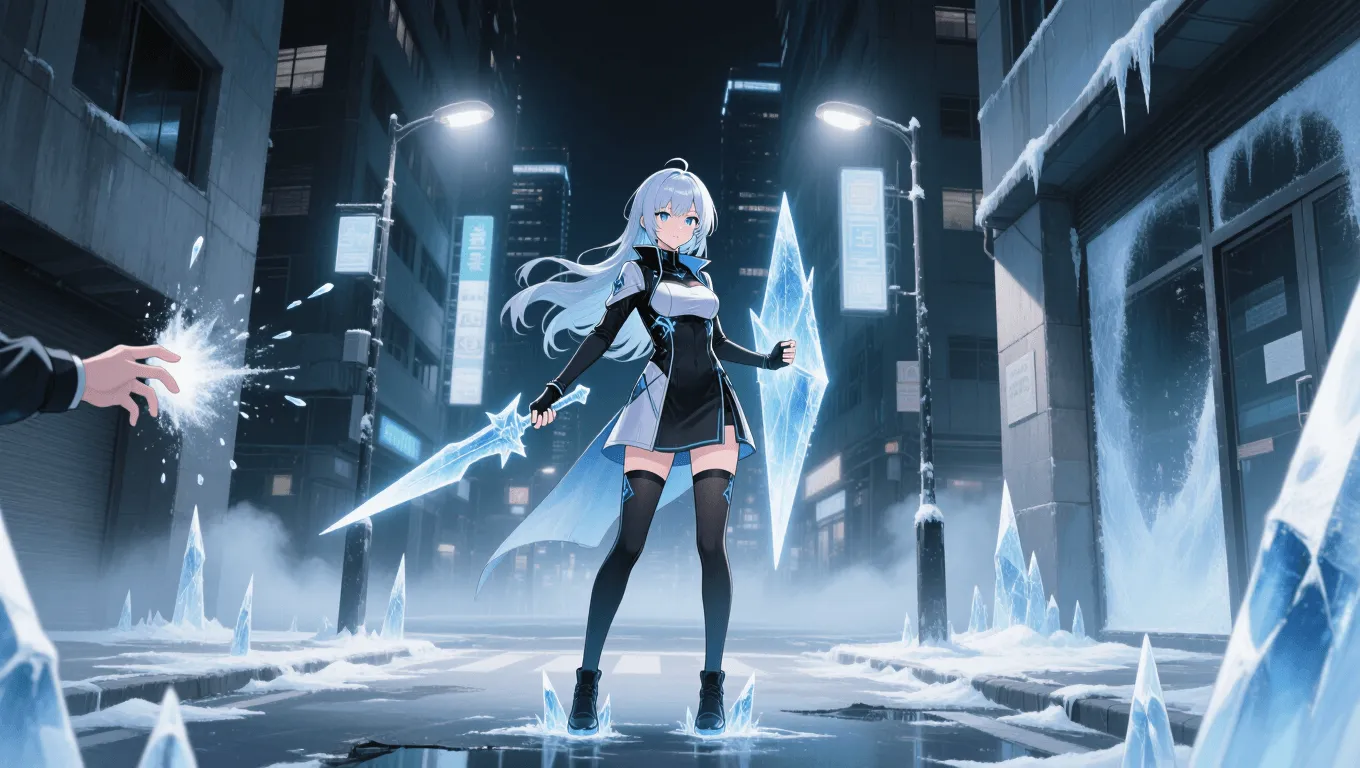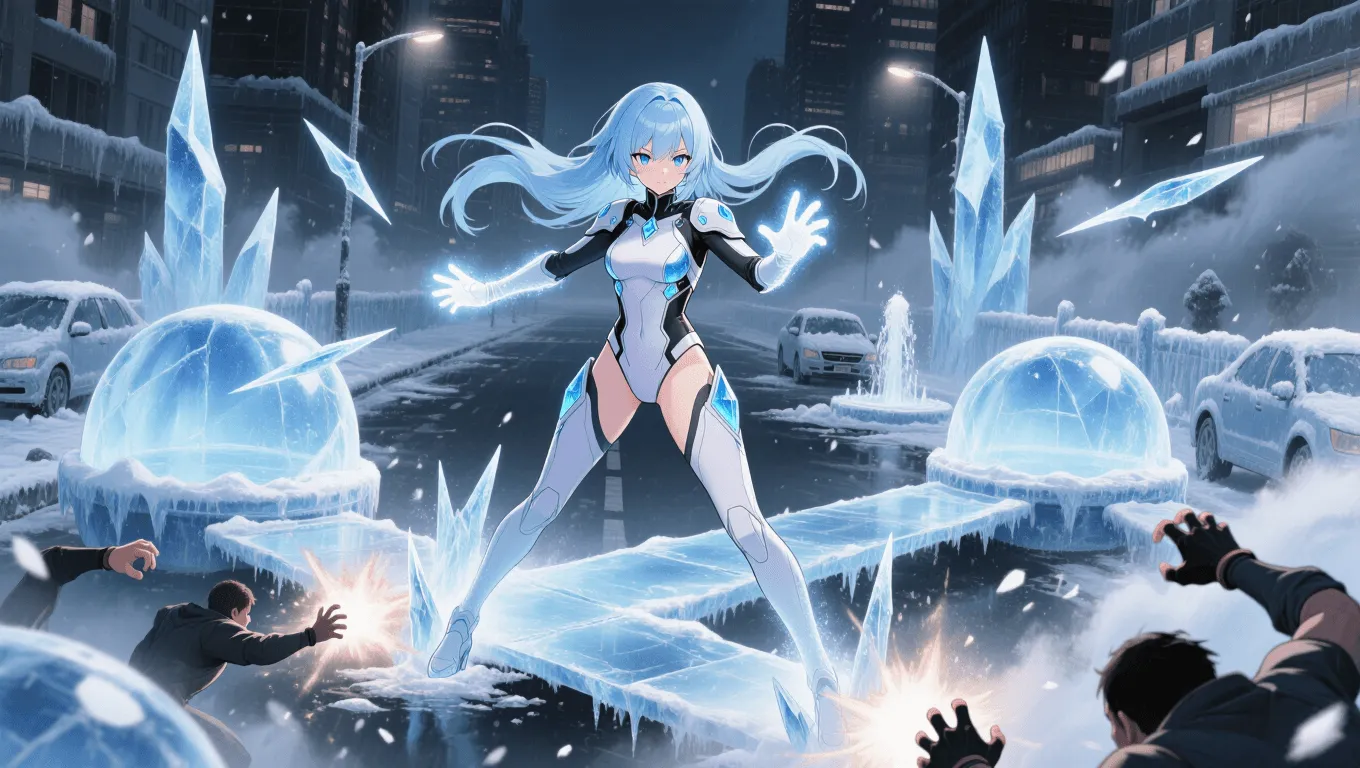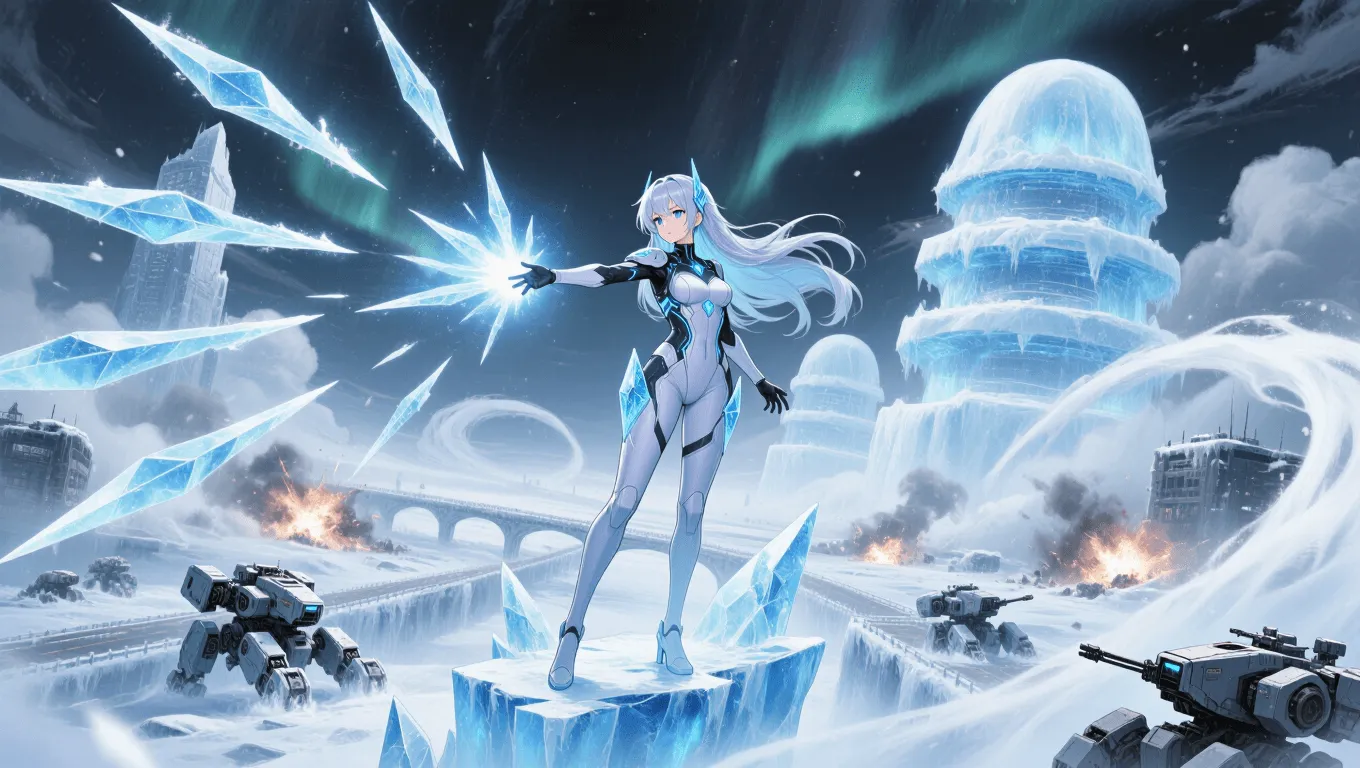Ice Manipulation | Cryokinesis

Ice Manipulation | Cryokinesis Video Demo 🎬
Table of Contents
- Ice Manipulation | Cryokinesis Video Demo 🎬
- What Is Ice Manipulation
- Core Abilities of Ice Manipulation
- Application / Tactical Advantages in Combat
- Level: Level 1 🏙️, Level 2 🌇, Level 3 🌃
- Limitations of Using the Ice Manipulation
- Weakness Against What Other Superpowers
- Synergistic Power Combos
- Known Users
Ice Manipulation, also known as cryokinesis, is the power to generate, shape, and control ice and cold. Users can lower ambient temperature, create ice constructs, unleash freezing blasts, and shield themselves with sub-zero barriers. This guide breaks down what the power is, how it works in combat, its progression across levels, and how it compares to or synergizes with other abilities. For a broader look at related powers, visit the Superpower Wiki, or discover a new ability with our Random Superpower Generator.
What Is Ice Manipulation
Ice Manipulation is the ability to influence water in its solid phase and the thermal energy around it. A user can draw heat from the environment, moisture from air or surfaces, and rapidly shift water to ice. This often overlaps with concepts like temperature control, frost generation, heat absorption, and thermodynamic regulation. While some users strictly craft ice constructs, stronger practitioners extend into limited thermokinesis—cooling targets, slowing molecular motion, and even creating localized blizzards.
In practice, cryokinesis typically operates on three pillars:
-
Phase control: Turning liquid water or humidity into ice (and sometimes back again).
-
Thermal manipulation: Reducing temperature to freeze targets or terrain, occasionally siphoning heat to empower further techniques.
-
Construct creation: Forming ice weapons, armor, platforms, walls, spikes, cages, and elaborate architecture.
Core Abilities of Ice Manipulation
1) Temperature Reduction and Heat Absorption
Users extract heat from the surroundings, triggering rapid cooling. This enables flash-freezing, frostbite induction, slowing enemy movement, and extinguishing flames by sapping their thermal energy. Advanced users can tune temperature gradients precisely, avoiding collateral damage.
2) Ice Generation and Frost Projection
By condensing atmospheric moisture, the user projects ice shards, icicles, and hail-like volleys. Frost waves can glaze the battlefield, turning floors slick and hazardous. In humid climates or near bodies of water, generation is faster and denser.
3) Ice Constructs and Hardening
Ranging from simple shields to complex bridges or domes, constructs depend on control and structural insight. Hardened ice can emulate steel-like durability, while layered or lattice designs create light, resilient fortifications. Many users craft weapons—spears, blades, chains—and reform them mid-fight.
4) Terrain Control and Environmental Engineering
Freezing terrain affects momentum and positioning. The user can create ramps for high-speed movement, spike fields for area denial, or permafrost to lock doors and machinery. In urban settings, quick frost seals can immobilize vehicles or reinforce barricades.
5) Cryo-Utility and Support Functions
Cooling medical packs, preserving perishables, forming temporary splints or casts, and creating safe walkways across water are common non-combat utilities. Controlled cooling can also stabilize overheating systems.
6) Defensive Cryo-Barriers
Layered ice barriers, snow curtains, and mist-chilled air can absorb kinetic force or scatter heat-based attacks. Encasing self or allies in translucent shells provides emergency cover.
7) Weather-Scaled Effects (Advanced)
Elite users create localized storms—blizzard creation, sleet, and whiteout conditions—combining cold air, wind shear, and snow generation to reduce visibility and sap stamina.
Application / Tactical Advantages in Combat
-
Crowd Control: Ice slicks and spike growths shape enemy movement, creating kill zones and safe corridors.
-
Tempo Advantage: Freezing limbs, weapons, or the ground slows opponents and disrupts formations.
-
Area Denial: Walling off alleys or doorways with quick-growing ice funnels foes into predictable routes.
-
Defense-on-Demand: Pop-up shields or domes stop projectiles and buy decision time.
-
Resource Neutralization: Ice can jam gears, freeze fuel lines, and dampen electronics via condensation (with caution).
-
Synergy with Terrain: Near water, the user enjoys rapid ammunition and structure supply; in deserts, power leans more on thermal drop than raw ice mass.
-
Counter-Fire: Heat absorption blunts flame attacks, and dense ice mist can obscure snipers and sensors.
Level: Level 1 🏙️, Level 2 🌇, Level 3 🌃
Level 1 🏙️ — Street-Level Cryokinesis

-
Scope: Room-scale influence; creates small shields, blades, and floor frost.
-
Temperature Control: Can drop a space by several degrees quickly, causing localized frost.
-
Offense: Short-range icicle volleys, ice spikes from wet surfaces, basic freeze-touch.
-
Defense: Thin shields, single-layer barriers, improvised cover.
-
Utility: Simple bridges over narrow gaps, emergency cooling, slippery zones for escapes.
-
Limits at This Level: Requires nearby moisture; constructs are brittle under heavy fire; prolonged use causes fatigue and self-chill risk.
Level 2 🌇 — District-Level Controller

-
Scope: Building blocks to city blocks; sustained, denser constructs.
-
Temperature Control: Can flash-freeze vehicles or small water features; limited heat siphon to recharge.
-
Offense: Multi-angle icicle storms, rapid spike growth under enemies, ice shackles, hail bursts.
-
Defense: Layered domes, shock-absorbing ice foam, dynamic barricades that regrow on command.
-
Utility: Creates stable bridges and platforms, escalates to limited blizzard pockets for cover and stamina drain.
-
Tactical Edge: Terrain ownership—dictates routes, isolates threats, and manipulates visibility.
-
Limits at This Level: Heat sources (engines, flamethrowers) create contested zones; precise control requires concentration; large constructs strain hydration in arid areas.
Level 3 🌃 — Battlefield & Climate Shaper

-
Scope: Multi-block to small-city cells; weather seeding and whiteout creation.
-
Temperature Control: Aggressive heat extraction; can plunge ambient temperature dramatically while managing collateral.
-
Offense: Siege-tier lances, omni-directional ice storms, permafrost fields that anchor structures or immobilize heavy mechs.
-
Defense: Regenerative citadel domes, layered composites with air gaps for insulation, anti-thermal veils that scatter heat signatures.
-
Utility: Ice architecture (bridges, towers), mobile ice roads, emergency cryo-stasis of hazards.
-
Limits at This Level: Enormous energy demand; risk of hypothermia for allies; environmental ethics and infrastructure damage concerns; countered by high-energy heat or plasma.
Limitations of Using the Ice Manipulation
-
Moisture Dependence: Generating ice is faster and sturdier with abundant water or high humidity. In arid climates, users rely more on pure temperature drop and thin frost.
-
Thermal Rebound: Rapid heat absorption can backfire; adjacent materials may fracture unpredictably. Managing heat flow is as important as making ice.
-
Structural Brittleness: Ice is strong in compression but weak in tension. Poor lattice design shatters under vibrations or concussive blasts.
-
Energy and Stamina Costs: Large-scale effects drain the user. Overuse risks dizziness, shivering, and slowed reflexes.
-
Collateral Risk: Flash freezing can crack pipes, burst containers, or damage ecosystems.
-
Counter-Environment: Industrial heat, geothermal vents, deserts at noon—these zones blunt freezing and melt constructs faster than they can be reformed.
-
Visibility Issues: Self-made blizzards hinder allies too; communication and marking become critical.
Weakness Against What Other Superpowers
-
Pyrokinesis / Heat Manipulation: Sustained high heat melts or fractures ice shields and thins mist cover.
-
Plasma and Laser Projection: High-energy beams punch through ice via ablation; reflective strategies only partially mitigate.
-
Vibration / Sonic Manipulation: Vibrations propagate cracks and shatter constructs; resonance can collapse domes.
-
Earth/Lava Manipulation: Magma and heated stone overpower frozen terrain; earth shapers can undermine ice foundations.
-
Electrokinesis (in Melt Zones): As ice transitions to water, conductivity rises—dangerous around electrical attacks.
-
Light Manipulation: Can pierce blizzard concealment and neutralize low-visibility tactics.
-
Absorption/Entropy Control (Advanced): Some energy absorbers can reclaim the very heat or kinetic energy leveraged by cryokinetics.
Synergistic Power Combos
-
Hydrokinesis + Ice Manipulation: Instantaneous freeze-shaping of water jets into blades, cages, and roads; unparalleled terrain control.
-
Aerokinesis + Cryokinesis: Wind-fueled blizzards, sleet artillery, and far-reaching cold fronts; rapid fog/whiteout deployment.
-
Telekinesis + Ice Constructs: Precision launching of ice shards, mid-air reconfiguration of barriers, and kinetic reinforcement to prevent shattering.
-
Shadow or Light Manipulation: Blizzards that distort light lines, creating stealth corridors; reflective ice can redirect beams with careful angles.
-
Plant Manipulation (Defensive): Encasing roots in protective permafrost to form living-ice bulwarks; ice moisture aids growth tactics.
-
Technology Augmentation: Cryo-sprayers, moisture harvesters, and insulated exosuits convert raw power into reliable, repeatable outputs.
-
Healing/Regeneration: Offsets self-chill and stamina drain, allowing longer control windows.
Known Users
-
Bobby Drake / Iceman (Marvel Comics): A classic example of adaptive cryokinesis, creating complex constructs and large-scale weather effects. Read about Bobby Drake on Marvel’s official site.
-
Killer Frost (DC Comics): Various incarnations channel heat absorption into potent freezing attacks and defensive shells.
-
Sub-Zero (Mortal Kombat): Iconic game character known for freeze blasts, ice clones, and slide attacks.
-
Esdeath (Akame ga Kill): Anime antagonist who freezes vast landscapes and forms colossal ice weaponry.
-
Gray Fullbuster (Fairy Tail): Uses ice-make magic for versatile weapons and structures, balancing offense and defense.
-
Shoto Todoroki (My Hero Academia): Wields half-cold abilities to create ice walls, ramps, and area control alongside thermal tactics.
-
Yue and the Northern Water Tribe (Avatar universe): Waterbending traditions show refined ice shaping, from bridges to battlefield control.
By mastering heat flow, moisture sourcing, and structural design, practitioners of Ice Manipulation—cryokinesis—become architects of the battlefield. From room-chilling frost waves to city-scale whiteouts, the power rewards planning, terrain awareness, and teamwork. To explore related abilities or discover something new, browse the full superpower wiki or spin the Random Superpower Generator.
